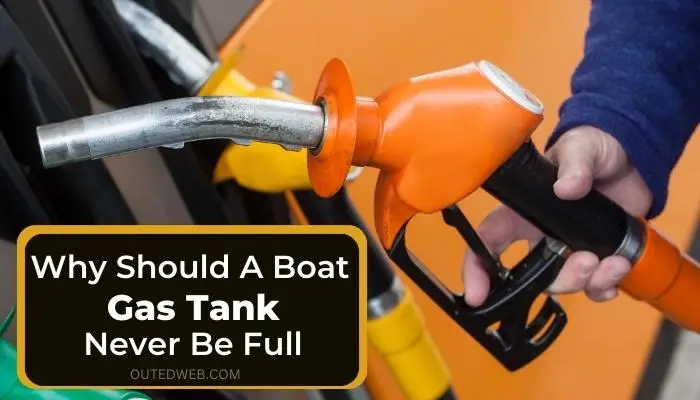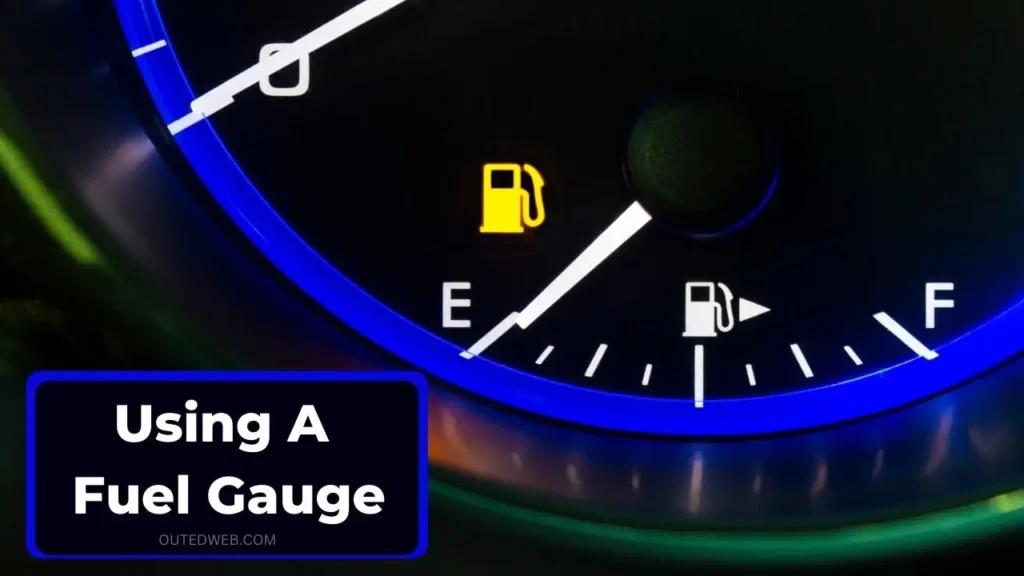You’re out on your boat, enjoying the beautiful weather and the calming sounds of the water. You’ve packed everything you need for a perfect day on the water, including plenty of fuel for your boat. But did you know that overfilling your boat’s gas tank could be dangerous?
It’s true—a boat gas tank should never be completely full. This may seem counterintuitive, but it’s essential for your boat’s safety and proper maintenance.
Gasoline expands as it gets warmer; if the tank is full, there’s no room for the gas to grow. This can lead to a ruptured tank or even a fire hazard.

Here, we’ll explore the reasons why you should never fill your boat’s gas tank entirely and how to determine the appropriate fill level for your boat. We’ll also discuss other risks of overfilling your boat’s gas tank and how to prevent them. So, let’s dive in and learn more about proper boat gas tank maintenance!
Read Related Articles:
What happens when a boat’s gas tank is completely full?
It may be tempting to totally fill your boat’s gas tank to save the inconvenience of recharging later. However, filling up the gas tank completely can lead to serious risks that could compromise the safety of your boat.
Gasoline expansion and pressure buildup
One of the primary risks associated with a full-boat gas tank is gasoline expansion. Gasoline expands as it gets warmer; if there’s no room for growth, pressure can build up inside the tank.
This can result in the tank bursting, which is exceedingly risky and perhaps catastrophic. In severe situations, the pressure building might trigger a gas tank explosion, causing significant damage to your boat and harm to you and your passengers.
Fire hazard
In addition to pressure buildup and the risk of a tank rupture or explosion, an utterly full boat gas tank can also create a fire hazard.
Gasoline fumes can accumulate in the tank when it’s full, and any sparks or ignition sources could ignite the fumes.
This is especially dangerous if your boat is exposed to direct sunshine or high temperatures for a lengthy time.
Environmental impact
Overfilling your boat’s gas tank can also have an environmental impact. Any fuel that spills out of the tank can harm the waterways, affecting aquatic life and potentially leading to pollution and other ecological problems.
This can also result in costly fines and legal issues for boat owners who violate environmental regulations.
How much fuel should you put in your boat gas tank?
Now that we know the risks associated with overfilling your boat’s gas tank, it’s essential to determine how much fuel you should put in the tank to ensure optimal safety and performance.
Check the manufacturer’s recommendations
The first step in determining the appropriate fill level for your boat’s gas tank is to consult the manufacturer’s recommendations.
The manufacturer’s manual will guide the tank capacity and how much fuel you should put in the tank to ensure safe operation.
Following these recommendations is essential to avoid any potential risks associated with overfilling.
Consider the conditions
In addition to the manufacturer’s suggestions, you must examine the conditions under which you will operate your boat.
If you are running your boat in hot weather, you should allow some extra space in the gas tank to account for gasoline expansion.
Similarly, if sailing in rough conditions, you should avoid overfilling the gas tank to guarantee adequate weight distribution and stability.
Use a fuel gauge
Using a fuel gauge can be an easy and effective way to determine the appropriate fill level for your boat’s gas tank. Most boats come equipped with a fuel gauge displaying the fuel amount in the tank. You can use this gauge to determine when the tank is approaching total capacity and to avoid overfilling the tank.

Use a dipstick
Another way to determine the appropriate fill level for your boat gas tank is to use a dipstick.
Dipsticks are commonly used to measure the amount of oil in a car’s engine, but they can also be used to measure the fuel level in a boat’s gas tank.
To use a dipstick, insert it into the gas tank until it hits the bottom, then remove it and check the fuel level on the stick.
Other reasons to avoid overfilling your boat’s gas tank
While safety is the most crucial reason to avoid overfilling your boat’s gas tank, there are additional factors to consider.
Decreased performance
Overfilling your boat’s gas tank can also lead to decreased performance. When the tank is overfilled, the gasoline can enter the engine and cause many problems, such as reduced acceleration, stalling, and poor fuel efficiency.
Maintaining the appropriate fill level for your gas tank can ensure optimal performance and avoid any potential engine problems.
Increased maintenance costs
The maintenance expense may rise due to overfilling your boat’s gas tank. Gasoline can damage an engine and necessitate repairs or replacements when it enters the engine. Avoiding overfilling the gas tank is the simplest way to prevent these charges, which may quickly mount up.
Legal implications
Overfilling your boat’s gas tank can also have legal implications. Many states have laws that prohibit overfilling gas tanks and require boaters to dispose of any spilled fuel properly. Violating these laws can result in fines and other legal consequences.
How does a full boat gas tank affect the weight distribution of the vessel?
Overfilling your boat’s gasoline tank might endanger its safety and influence its weight distribution. Weight distribution is an essential factor in boat performance and stability and can be impacted by the amount of fuel in your tank.
The weight distribution of the boat can affect the center of gravity. When the gas tank is full, it can add significant weight to the vessel, causing the center of gravity to shift and the boat’s stability to suffer. This can result in diminished maneuverability, decreased speed, and an increased chance of capsizing.
To ensure safe and optimal operation, it’s crucial to maintain proper weight distribution in your boat. This includes ensuring that the gas tank is not overfilled and that other heavy items on the boat are properly distributed.
Maintaining proper weight distribution can help ensure that your boat is stable, maneuverable, and operates at its best.
Does Ethanol Fuel Play a Role in Gas Tank Capacity?
When it comes to fueling your boat, you may have noticed that many gas stations have various fuel options, including ethanol mixes.
Ethanol fuel is a type of renewable energy made from plants such as corn, sugar cane, or barley.
While ethanol fuel is better for the environment than traditional gasoline, it can affect your gas tank capacity.
Ethanol Fuel and Water Absorption
One of the main reasons why a boat gas tank should never be full is because ethanol fuel can absorb water. Water can enter your gas tank in various ways, such as condensation, rainwater, or even water in the fuel itself.
When ethanol fuel absorbs water, it can cause multiple issues, including reduced engine performance and increased corrosion.
Additionally, ethanol fuel can only absorb a certain amount of water before it reaches its saturation point. This means that if your gas tank is completely full, there may not be enough room for any water that enters the tank.
This can lead to water being pushed into your engine, which can cause severe damage and even complete engine failure.
The Importance of Regular Maintenance
To prevent issues with your boat’s gas tank, it’s crucial to maintain your fuel system regularly. This includes checking for any signs of water in the fuel, such as a cloudy appearance or water droplets. It would be best to consider using a fuel stabilizer to help prevent corrosion and protect your engine.
Another critical maintenance aspect is ensuring that your boat’s gas tank is properly vented. A vented gas tank allows air to escape as fuel is added, preventing pressure buildup and reducing the risk of fuel leaks or spills.
A professional mechanic can help ensure that your gas tank is vented correctly and can also inspect the tank for any signs of damage or wear.
Final Say
Overfilling your boat’s gas tank can pose various risks, including safety concerns, environmental impact, decreased performance, increased maintenance costs, legal implications, and effects on weight distribution.
It’s essential always to follow manufacturer recommendations and only fill your gas tank to the appropriate level.
You may help secure your and others’ safety, protect the environment, maintain peak performance, and prevent any potential legal or financial implications. As a responsible boat owner, you must know these dangers and take the required precautions.

